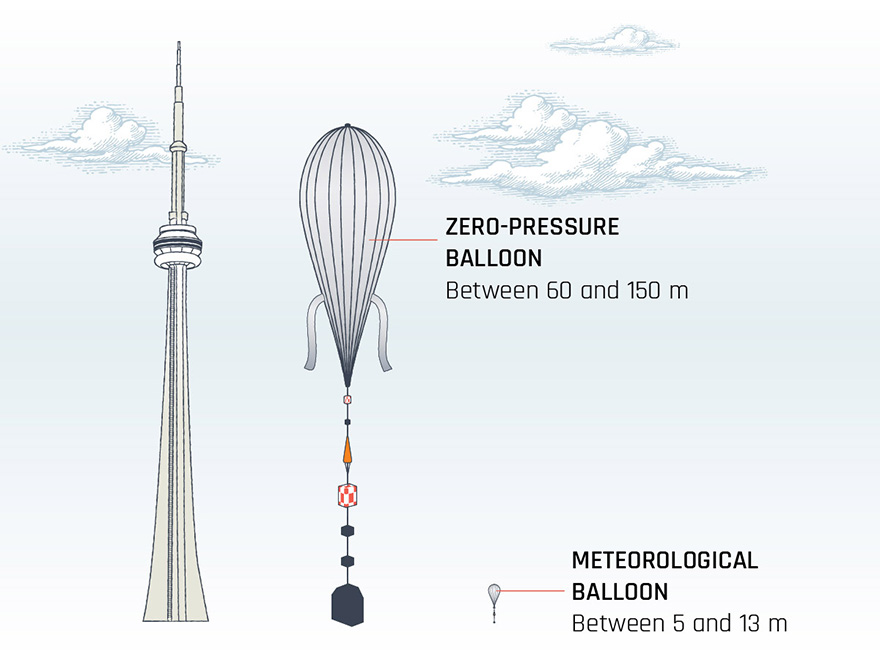Zero pressure balloon and meteorological balloon – A comparative table
The STRATOS campaign uses two types of balloons: the zero-pressure balloon and the meteorological balloon or stratospheric expandable balloon. These balloons look very similar but have different technical characteristics.

Text version of zero pressure balloon and meteorological balloon's differences infographic
Envelope diameter at float altitude: Zero pressure balloon between 60 and 150 m. Meteorological balloon between 5 and 13 m.
| Zero pressure balloon | Meteorological balloon (stratospheric expandable balloon) | |
|---|---|---|
| Volume of the envelope | Usually between 100,000 m³ (about 40 times as big as an Olympic swimming pool) and 800,000 m³. | Between 180 and 1150 m³. |
| Balloon size | The balloon size is mission dependent. It is chosen during campaign preparation. | |
| Envelope diameter at float altitude | Between 60 and 150 m. | Between 5 and 13 m. |
| Mass of the envelope | Between 330 and 1200 kg. | Between 0.8 and 3 kg. |
| Composition of the envelope | Ultra-thin polyethylene plastic. | Natural latex. |
| Type of gas | The balloons are filled with gas that is lighter than air (helium or hydrogen). It gives them the ability to carry payloads, some very heavy, at stratospheric altitudes. | |
| Altitude | The balloon carries scientific experiments and payloads to an altitude of up to 40 km. | The balloon carries scientific experiments and payloads to an altitude of between 20 and 35 km. |
| Flight duration | From several hours to a week. | Around 2 to 3 hours. |
| Flight profile |
|
|
| Manoeuverability | The balloon is equipped with an exhaust valve and a ballast tank allowing the aerostat altitude to be changed. | No device. |
| Payload weight | Anything from a few hundred grams to several tonnes. | Up to 8 kg. |
| Recovery of pieces upon landing | The balloon envelope and flight train are fully recovered after each flight. | Only the flight train is recovered. |
| Type of payload | The gondolas can carry science, astronomy, atmospheric chemistry (remote sensing and in-situ measurement), weather forecasting, Earth observation and technological demonstration payloads. | The gondolas can carry the same type of science as the zero pressure balloon but miniaturized. |
